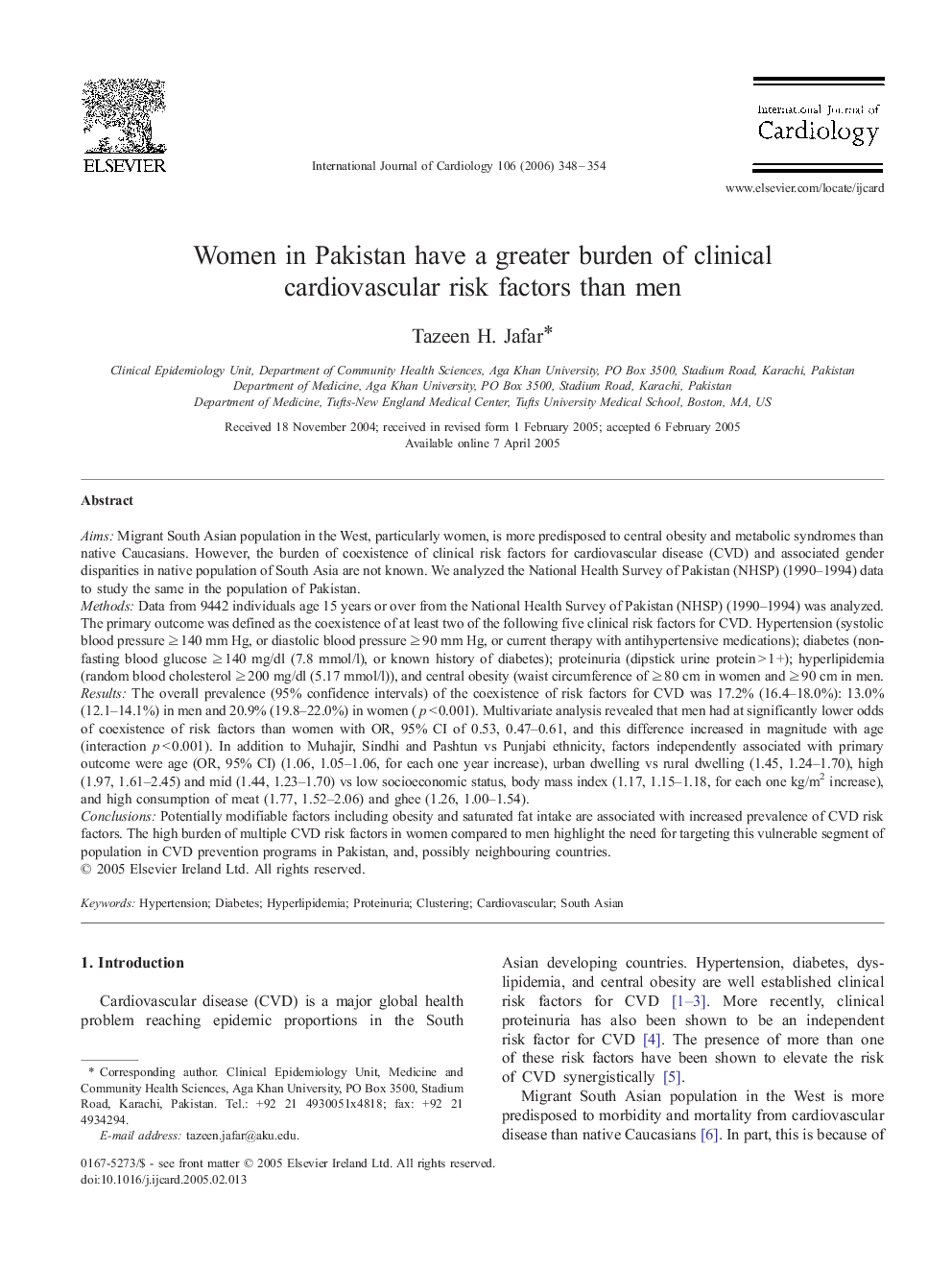| Article ID | Journal | Published Year | Pages | File Type |
|---|---|---|---|---|
| 2936806 | International Journal of Cardiology | 2006 | 7 Pages |
AimsMigrant South Asian population in the West, particularly women, is more predisposed to central obesity and metabolic syndromes than native Caucasians. However, the burden of coexistence of clinical risk factors for cardiovascular disease (CVD) and associated gender disparities in native population of South Asia are not known. We analyzed the National Health Survey of Pakistan (NHSP) (1990–1994) data to study the same in the population of Pakistan.MethodsData from 9442 individuals age 15 years or over from the National Health Survey of Pakistan (NHSP) (1990–1994) was analyzed. The primary outcome was defined as the coexistence of at least two of the following five clinical risk factors for CVD. Hypertension (systolic blood pressure ≥ 140 mm Hg, or diastolic blood pressure ≥ 90 mm Hg, or current therapy with antihypertensive medications); diabetes (non-fasting blood glucose ≥ 140 mg/dl (7.8 mmol/l), or known history of diabetes); proteinuria (dipstick urine protein > 1 +); hyperlipidemia (random blood cholesterol ≥ 200 mg/dl (5.17 mmol/l)), and central obesity (waist circumference of ≥ 80 cm in women and ≥ 90 cm in men.ResultsThe overall prevalence (95% confidence intervals) of the coexistence of risk factors for CVD was 17.2% (16.4–18.0%): 13.0% (12.1–14.1%) in men and 20.9% (19.8–22.0%) in women (p < 0.001). Multivariate analysis revealed that men had at significantly lower odds of coexistence of risk factors than women with OR, 95% CI of 0.53, 0.47–0.61, and this difference increased in magnitude with age (interaction p < 0.001). In addition to Muhajir, Sindhi and Pashtun vs Punjabi ethnicity, factors independently associated with primary outcome were age (OR, 95% CI) (1.06, 1.05–1.06, for each one year increase), urban dwelling vs rural dwelling (1.45, 1.24–1.70), high (1.97, 1.61–2.45) and mid (1.44, 1.23–1.70) vs low socioeconomic status, body mass index (1.17, 1.15–1.18, for each one kg/m2 increase), and high consumption of meat (1.77, 1.52–2.06) and ghee (1.26, 1.00–1.54).ConclusionsPotentially modifiable factors including obesity and saturated fat intake are associated with increased prevalence of CVD risk factors. The high burden of multiple CVD risk factors in women compared to men highlight the need for targeting this vulnerable segment of population in CVD prevention programs in Pakistan, and, possibly neighbouring countries.
